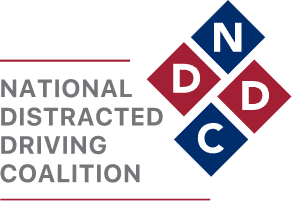WASHINGTON, D.C. — October 15, 2025 — The National Distracted Driving Coalition (NDDC) is urging drivers to set their phones to automatically silence calls and notifications while they are behind the wheel in honor of the fourth annual National Do Not Disturb While Driving Day on Thursday.
All smartphones can be configured to automatically block some or all notifications when a driver is behind the wheel, reducing the chance they will be distracted by a ringing or beeping cellphone. Settings can be adjusted so that notifications from certain contacts can still get through.
“Even a split second of inattention can change your life or someone else’s,” said Robyn Robertson, NDDC Chair and Secretary of the Board at the Traffic Injury Research Foundation USA, Inc. (TIRF USA). “Many drivers may not intend to drive distracted, but checking cellphone notifications has become second nature. This setting can block incoming notifications until drivers reach their destination. We’re encouraging everyone to turn it on today and leave it on, so it can help you every day.”
The distracted driving problem
The National Highway Traffic Safety Administration estimates that distraction is involved in more than one in four (29%) of all crashes in the United States, resulting in about 12,000 fatalities a year. Cellphone usage is a major contributor. A recent study from the Governors Highway Safety Association and Cambridge Mobile Telematics showed drivers who used phones behind the wheel were 240% more likely to be involved in a crash compared to drivers who did not.
“It may seem obvious, but anything that takes your attention away from the road increases your chance of being in a crash, and that chance increases the longer you’re looking away,” said Robertson. “This feature won’t eliminate all distractions, but it does substantially reduce them. It’s one immediate action all drivers can take today to make our roads safer.”
Unlike other longstanding traffic safety issues such as driving while impaired or failing to buckle up, many drivers may not recognize the risks posed by cellphone distraction, and studies have consistently shown that rates of cellphone use while driving remain high. A 2022 study from the Insurance Institute for Highway Safety, for example, revealed that half of drivers reported performing device-based tasks regularly while driving. Other research demonstrates the prevalence of using a smartphone while driving among teen drivers is lower, but still, more than one-third of drivers aged 14-19 reported also engaging in this behavior according to a 2025 NDDC study of young drivers led by TIRF USA.
Awareness and use of Do Not Disturb While Driving features
Call and notification blockers that switch on automatically when the user is driving have been available for nearly a decade. Several recent studies offer good news, but more work is needed to increase use of the feature. The 2025 NDDC study, for example, revealed the most common strategies adopted by younger drivers to avoid distracted driving included enabling Do Not Disturb. But that use declined with age, with the highest usage reported among 14–15-year-olds (60%) and dropping to 49% among 18–20-year-olds. Relatively high use rates among the youngest drivers are very encouraging, however, the decline in use as teens age suggests more work is needed to reinforce the importance of continuing to utilize safety strategies as teen drivers become young adults
Research from Cambridge Mobile Telematics (CMT) similarly revealed there’s a significant opportunity to increase use of the feature among all drivers. In its latest survey, CMT found that more drivers than ever know about their phone’s automatic blocking feature, but fewer than a third of drivers use it frequently.
Common reasons for not wanting to use the feature included believing it’s unnecessary and worrying about missing important calls or messages. “If you’re concerned about being available, your phone may allow autoreplies, and you can adjust settings so certain contacts can get through,” said Ryan McMahon, NDDC steering committee member and Senior Vice President of Strategy and Corporate Development at CMT. “Awareness of Do Not Disturb While Driving continues to grow each year,” added McMahon. “Now the challenge is turning that awareness into regular use.”
Parents are encouraged to play a role by checking in with their teens about whether they’re using this tool, and by setting the example behind the wheel. Teens often model the driving habits they observe from a young age, so when parents make distraction-free driving the norm by turning on Do Not Disturb and practicing other safe driving behaviors, it encourages young drivers to make it part of their routine too.
The NDDC joins other prominent safety organizations and stakeholders from across the country in supporting National Do Not Disturb While Driving Day. Individuals and organizations can join the movement by using #DNDWD25 on social media and helping to spread the word through newsletters and other channels, and by speaking with friends and family about the feature. Social media graphics, how-to videos, and other campaign materials are available through the NDDC website.
NDDC Steering Committee Press Contacts
Nick Chabarria
Automobile Club Of Missouri
JOE YOUNG
Insurance Institute for Highway Safety
